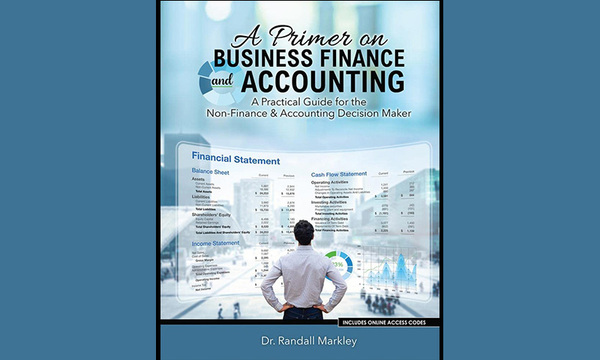In part one of this blog topic, I took a critical look at two of the five specific categories of financial ratios required in the undergraduate capstone Strategic Management course and discussed what lies below a casual analysis (short-term solvency/liquidity ratios, long-term solvency ratios). In part 2 of this discussion, I’ll provide a leadership perspective on how to understand asset utilization ratios, profitability, and market value. I’ve found that a very practical look at financial ratios from a unique leadership perspective will cause us to think more deeply about what the ratios reveal, how they impact the success or failure of an organization, and how they impact the firm’s ability to leverage new distinctive competences.
Asset Utilization Ratios
Traditionally, businesses analyze asset utilization ratios such as inventory turn or receivables turn to determine how efficient an firm is relative to competitors in their industry. For example, if a firm turns its inventory over six times per year and its direct competitors turn their inventory over four or five times a year, the predominant view is that the firm is more efficient than competitors. But is it that simple, that black and white? Could there be reasons why leaders keep more inventory on hand? Is there a deeply embedded cultural norm or a leadership philosophy that explains why one firm may have good reason to keep more inventory on its shelves than is normal for the industry?
I would argue that if the leaders of the firm are concerned about customer relationships, if they are diligent in their efforts to differentiate customers by current and future value, that their view of an inventory management strategy (JIT, FIFO, LIFO) might be much different than their competitor. What if the competitor, practicing JIT (just in time inventory) while keeping costs down ultimately had to back-order a product for a most valuable customer? What impact might this have on the firm’s on-going relationship with the customer? I’d suggest that it may be prudent to appear less efficient, to hold inventory longer, if it were necessary to be certain that best and most valuable customers were never subjected to product allocation problems, shortages, or order backlogs. In short, I would suggest that it is always prudent to be efficient wherever possible, but not at the expense of serving our best and most valuable customers.
Profit
Over and over in notes to financial statements in correspondence to various stakeholders, we hear about sales volume and gross revenue. Every February, we read in the newspaper about how great the Christmas retail season was. Read closely and you’ll see that there were tons of units moved and that gross revenues were strong, but why is it that we never hear about the corresponding impact on profit margins? Is it possible that revenue growth, unit sales, or other measures of gross volume could be misleading? Is it possible that selling items at high volume through black Friday sales and other promotions could be destroying our profit margins? Might we not entertain the possibility that declines in volume or unit sales may not be bad, and in fact might be associated with a corresponding increase in profit margins? It begs the question, would a firm be better off with sales volume of thirty million, but be in the red, or have sales decline to fifteen million, but a profitable fifteen million? I challenge students to track their companies (and direct competitors) over a five-year period and compare revenue growth against profit. If profit is in decline, flat, or not keeping pace with revenue growth, is there not a cliff and a steep fall ahead?
Market Value
When students in the capstone course are asked to look at market value, there are two required ratios: the price-earnings ratio (the price per share of stock divided by earnings per share) and market-to-book ratio (market value per share divided by book value per share). I also ask students to consider how stock price has trended over a five-year rolling period (how this compares to direct competitors in the industry) and whether or not dividend payments have been made (similarly how this has trended against industry competitors over the same rolling five years). Investors looking at high P/E ratios may logically presume that the firm has significant prospects for future growth. A book value per share of less than one could suggest to investors that leadership has not done a good job creating value or increased value on the initial investment. I ask students to begin a deeper analysis by considering why stakeholders choose to invest in the firm in the first place? The simple answer is ROI (return on investment). People invest in a company because they think it will give them the greatest return on their investment and as quickly as possible. However, the fact is that when a firm is investing in the creation of differentiation strategies, it might not positively impact profit margins for several quarters. Creation of new forms of sustainable competitive advantage is an investment strategy.
I believe is prudent for students to understand is that implementation of their major programmatic recommendations are not feasible if stakeholders are impatient, if stock price has stumbled, or if dividend payments have declined or even stopped. When considering what market value rations mean, we should be looking at “shareholder or stakeholder activism,” the relevant patience that investors have. If there are severe short-term pressures on leaders, irresponsible business behaviors might be the result. Would it not be prudent to create strategies that inform and educate our investors about the strategic direction of the firm?
My ultimate objective is to challenge 51¬Ð¿Ú‚Äôs Crowell School of Business graduating seniors to look at financial ratios from a unique leadership perspective and to think more deeply about what the ratios reveal, how they impact the success or failure of an organization, and ultimately how the relative solvency of the firm impacts the firm‚Äôs ability to leverage new distinctive competencies.
 51¬Ð¿Ú
51¬Ð¿Ú

.jpg)
.jpg)

